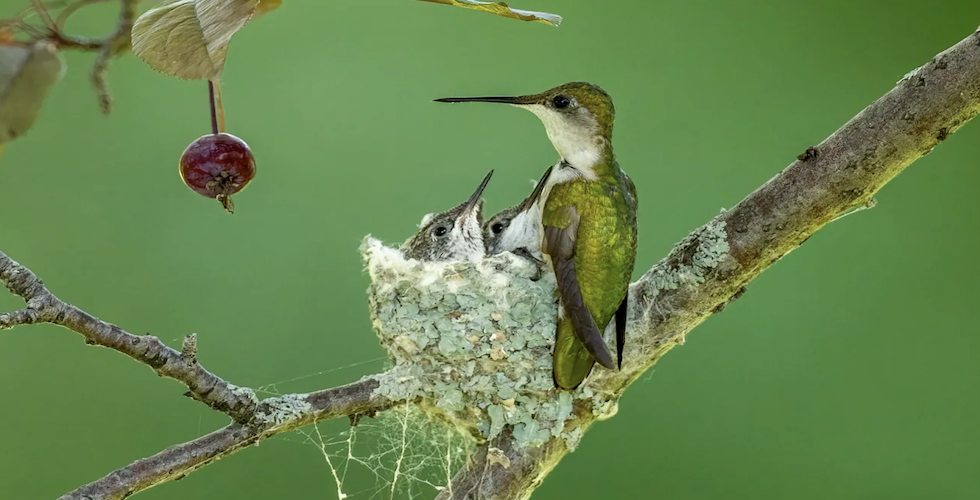
Attracting Different Bird Species to Your Property
Stan Tekiela has been spending a lot of time improving the habitat on his 30-acre lake property, with the goal to provide nesting opportunities for as many bird species as possible. Since he put up a great horned owl nesting platform three years ago, lo and behold, a pair of great horned owls has nested on the platform twice. Find out what else he has done to attract different bird species.
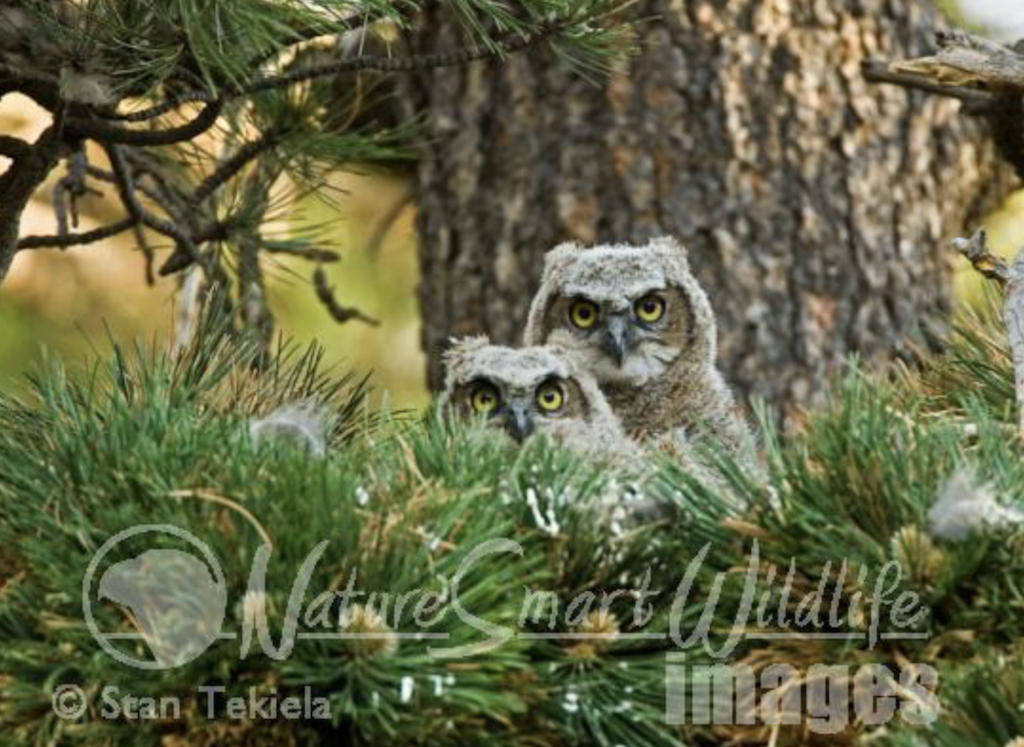
I have put up dozens of bluebird nest boxes, which not only attract eastern bluebirds but also house wrens, tree swallows, and even a great-crested flycatcher. I leave dead trees standing so the woodpeckers can excavate a cavity to raise their young.

Over the years, I have planted many kinds of trees to provide nesting opportunities for a wide variety of bird species. So last month I was thrilled beyond belief when I spotted a female ruby-throated hummingbird and her tiny nest, on a limb of one of my crabapple trees. It was in a perfect location to allow me to set up and capture some images while studying her nesting behaviors.

The ruby-throated hummingbird (Archilochus colubris) is the only species of hummingbird that nests in the eastern half of the country. The male and female have separate territories. After mating, the female will claim a territory and begin constructing a nest. She uses soft plant materials such as cattail down from last year’s seed heads. She binds the soft plant material together using spider silk. This allows the nest to be flexible; when she constructs the nest, it fits her body, that of a single adult-size hummingbird. However, the female always lays two eggs, and the chicks will grow to full size before leaving the nest. This means the nest needs to expand to accommodate three adult-size birds, and the spider silk allows the nest to expand.
The nest on my property was located about 12 feet above the ground. The best images and video are taken when the photographer is at eye level, so somehow I needed to get myself 12 feet in the air. Fortunately, I had purchased a couple of sections of scaffolding and was ready for this moment. I had previously used scaffolding to make a platform to film my great horned owl nest, in fact.
I waited until the female was out feeding herself to set up the scaffolding. Two sections of scaffolding got me 12 feet high on a stable, flat, wooden platform. Once it was set up, I covered it in a camouflage fabric and netting so I could come and go from the elevated blind without disturbing the nesting female. First, I captured images of the female incubating the eggs.
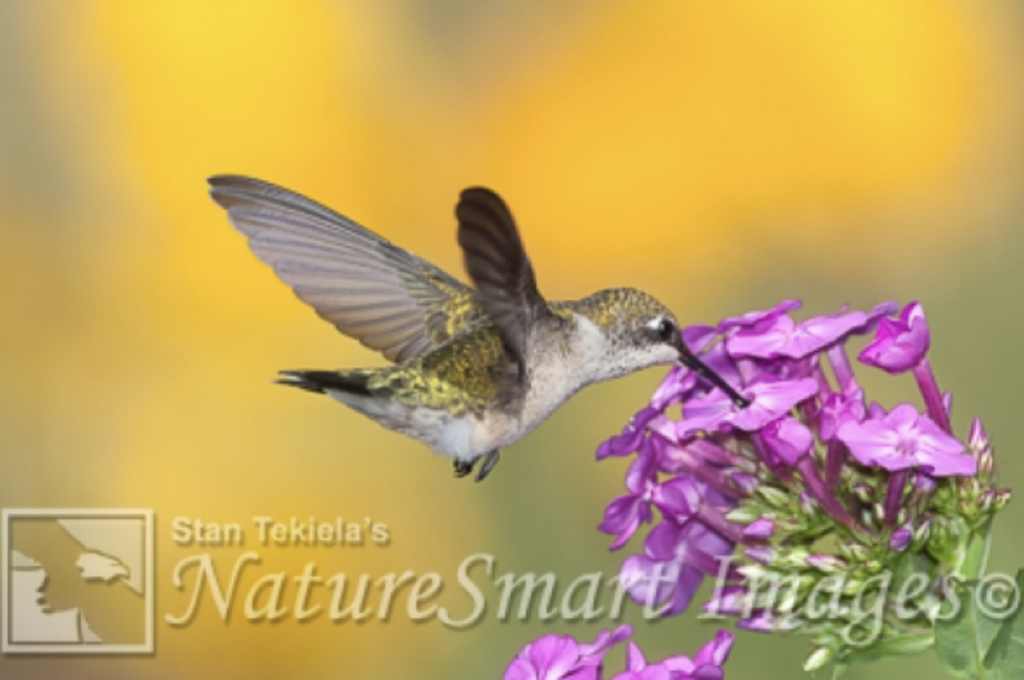
After 12 days, the eggs hatched. The female would sit on the babies, keeping them warm, then go off to feed herself. When she would fly back up to the nest, the two tiny babies would lift their heads and open their beaks, begging for food. The female inserted her beak deep into the babies’ open mouths and regurgitated the nectar and insect brew. She would go back and forth between the two babies until they were satisfied. Then she would sit on her babies to keep them warm. Meanwhile, I was perched on top of a 12-foot-tall scaffolding, swaying in the wind, capturing images and video of these remarkable encounters.

The babies grew very quickly; soon, their eyes were open and feathers started to appear on the tiny hummers. Mom would go off to eat insects and nectar and would only come to the nest about once per hour. This meant that I would spend 4 to 6 hours a day perched 12 feet up in the air, waiting for any opportunity to film the birds’ behaviors. During these half-day sessions, in the morning, she would visit the nest about 4 to 6 times. Each visit lasted less than 1 minute. If I missed the feeding or my camera couldn’t capture focus, I would have to wait another hour for my next opportunity.
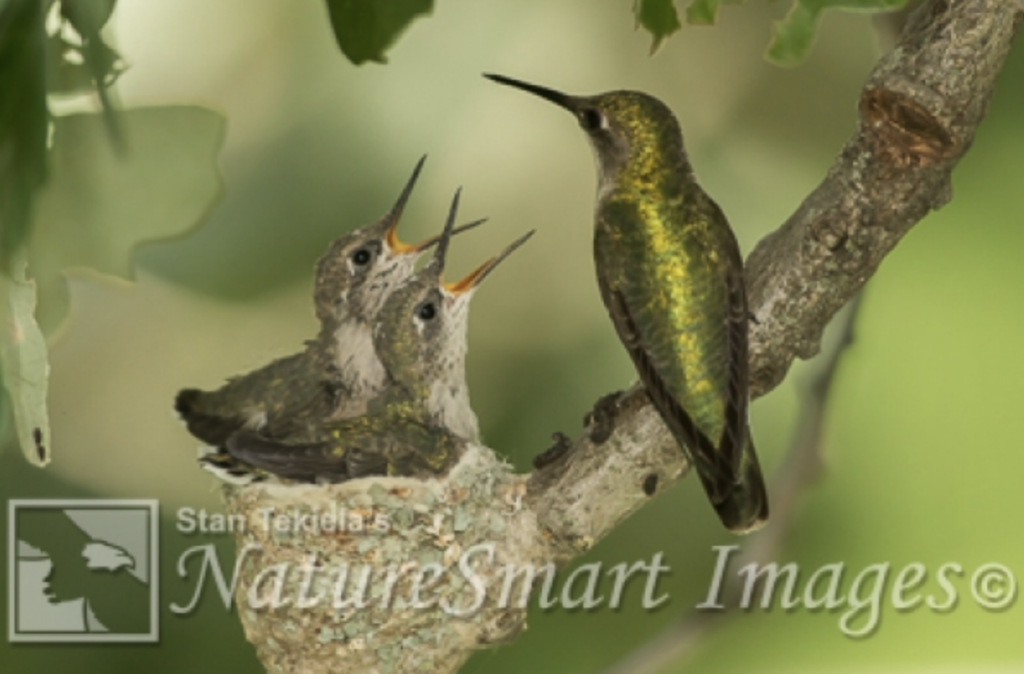
This went on for almost two weeks, until the chicks were fully grown. I had a chance to film the youngsters practicing flapping their wings at the edge of the nest.
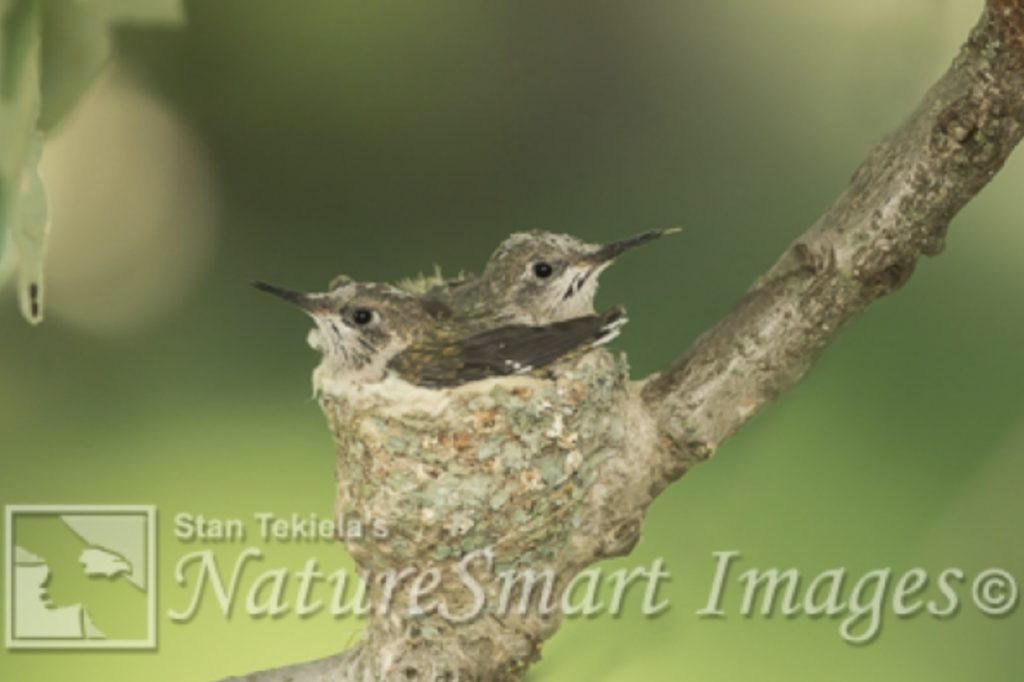
Then, at just 18 or 19 days old, the young took their first flight and left the nest. After leaving the nest, they didn’t return. Overall, it was an amazing experience, and it made me happy that I put in the effort to improve the natural habitat in my own yard.
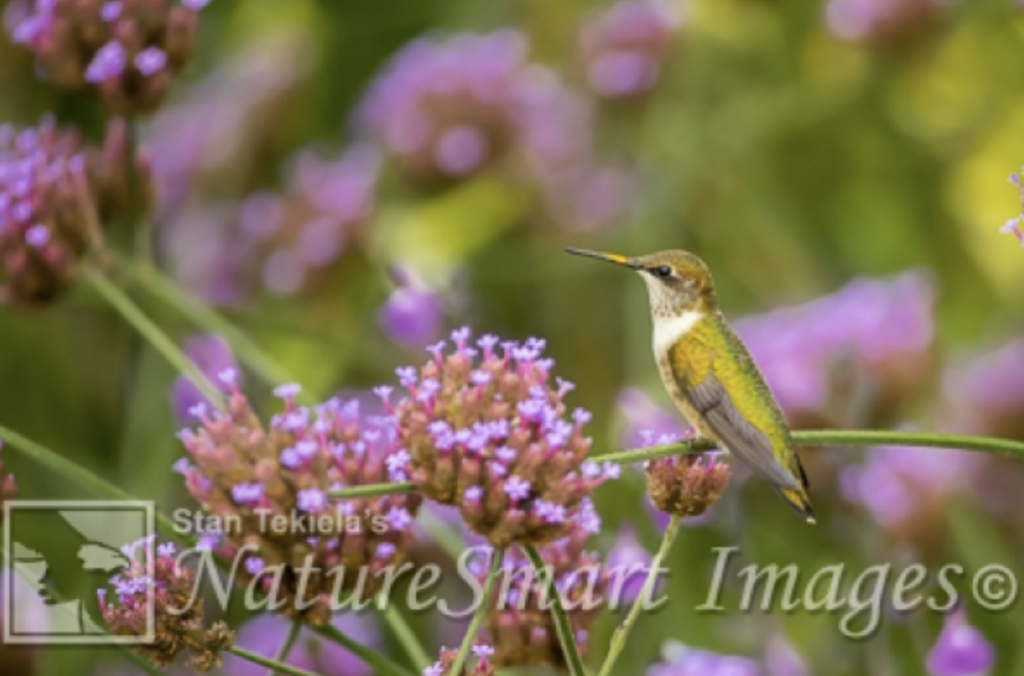
About the author: Naturalist, wildlife photographer, and writer Stan Tekiela has published more than 175 field guides, nature books, children’s books, wildlife audio CDs, puzzles, and playing cards, presenting many species of birds, mammals, reptiles, amphibians, trees, wildflowers, and cacti in the United States. With a Bachelor of Science degree in Natural History from the University of Minnesota and as an active professional naturalist for more than 35 years, Stan studies and photographs wildlife throughout the United States and Canada. He has received various national and regional awards for his books and photographs.
Also a well-known columnist and radio personality, Stan’s syndicated column appears in more than 25 newspapers, and his wildlife programs are broadcast on a number of Midwest radio stations. Stan can be followed on Facebook and Twitter. He can be contacted via www.naturesmart.com.
If you enjoyed this post, sign up for our newsletter. #bewellbeoutdoors


